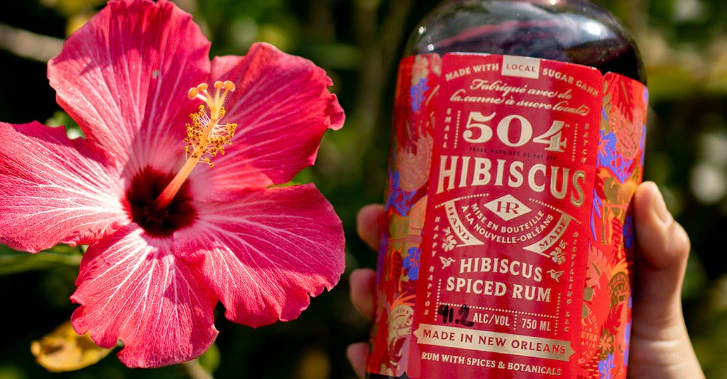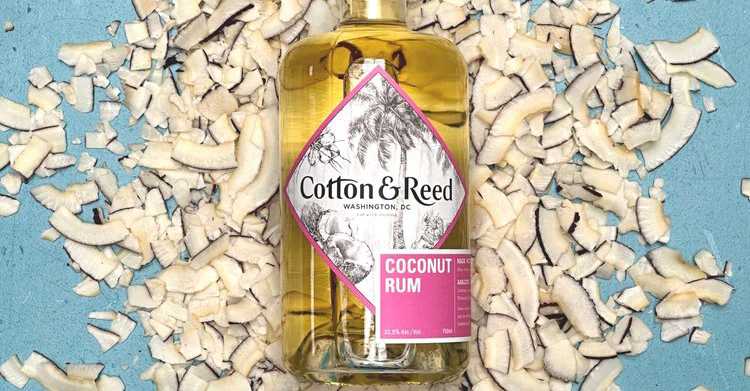Rum enthusiasts are often divided on the question of “flavored” or sweetened rums.
For one thing, most drinkers are unaware that many popular rum brands are full of artificial flavors and colors or that they’re so heavily sweetened they’re practically liqueurs. In response, many purists simply seek out pure, unadulterated rums. (This is often true with craft spirits, in general, where “no added flavors or sugar” is often the norm.)
However, some craft distilleries are embracing the idea of infusing rums with natural ingredients, honoring the Caribbean tradition to create exciting and flavorful rums—and being transparent about it the whole way.
Although the big brands using lots of unnamed artificial ingredients are certainly doing something novel, in a way, there actually is a long Caribbean tradition of infusing rum with fruit, herbs, and spices. In our search for inspiration, let’s take a look at some of those examples.
Flavored Rum as Tradition
In Puerto Rico, for example, pitorro is a popular—and often homemade—rum that is “cured” with fruits such as mango, tamarind, coconut, pineapple, or raisins. Sometimes, they also use coffee and chocolate.
In some cases, people are infusing these rums just because they enjoy the flavors. In others, they view them as having medicinal properties—such as clairin trempé from Haiti, a local white rum infused with cinnamon and other spices and herbs. The Dominican Republic, meanwhile, has mamajuana—flavored with spices, wine, and honey, and given credit for fighting the flu or working as an aphrodisiac.
One of the best-known styles of infused rum, however, is rhum arrangé, It hails from smaller French Caribbean islands such as La Reunion and Martinique—and it was there that Mark Taliancich, head distiller at Happy Raptor in New Orleans, was inspired by the tradition.
“My wife and I got married on Martinique, which is a great place for rum,” Taliancich says. “We went to three or four distilleries out there, and we found this packet of spices that you could buy at one of the little shops. And it was specifically made to be put into a bottle of white rum, let it sit in there for a week or two, and then drink it.”

Photo: Courtesy Happy Raptor
Craft Riffs on Tradition
That flavorful, nearly-ready-made cocktail would later be an inspiration for Taliancich at Happy Raptor, which he cofounded in 2020 with wife and business partner Meagen Moreland-Taliancich, and their series of flavored 504 Rums, named for the New Orleans area code. (Sadly, the couple announced they would close their distillery for good in May 2024.)
“I had a bottle that I had used to infuse the packet from Martinique and knew this packet had hibiscus and some other spices and fruit in it,” Taliancich says. “But since I didn't know what was in it, I had to play it by ear, and so that was the inspiration for the [504] Hibiscus Rum. But it did take me about 18 months to get that infusion right!”
Another Happy Raptor rum is based on a famous dessert first created in New Orleans. “Bananas Foster is an extremely popular dessert here which uses rum,” Taliancich says. “That rum took about a year and a half of trying to figure out the balance. I had to figure out the combination of spices and banana and mouthfeel and everything without sweetening it, because we don’t back sweeten any of our rums.”
Happy Raptor’s 504 range of rums also includes 504 Coffee and 504 King Cake, which gets flavors from spices, oranges, and pecans to evoke the popular Mardi Gras treat.
At Cotton & Reed Distillery in Washington, D.C., meanwhile, the idea for an infused rum was more personal.
“Our CEO, Jordan [Cotton], is a huge coconut fanatic,” says John Hayes, head distiller at Cotton & Reed, “So, it was always something that he wanted to have.”
However, Hayes says, “coconut is a very polarizing topic, especially coconut rums. Most people automatically assume [it’s] something that probably tastes kind of like sunscreen, is overly sweet, and brings them back to college days. And we really wanted something that [had] a natural level of sweetness and also tasted like a real coconut.”
Besides its Coconut Rum, Cotton & Reed also offers Allspice Dram—an unusual amaro-inspired liqueur with spices, sugar, lime, and gentian for a balancing bitterness.
Almost straight east from Cotton & Reed, as the heron flies—across the Chesapeake Bay and into coastal Maryland—Windon Distilling is another small distillery offering several infused rums, many of them as seasonal offerings. Its Lyon Rum range goes beyond White and Dark to include flavors such as coffee, orange, pineapple, and more.
Head distiller Brett Steigerwaldt says their first flavored creation was a blackberry rum that came about by chance.
“A local farmer came by with several flats of ripe blackberries they desperately needed to sell—they were at peak ripeness and wouldn’t last until market day,” Steigerwaldt says.
Yet even with that fruit falling into his lap, the process of getting [it] into rum isn’t quite so straightforward. “When planning the blackberry rum process, I started from the desired end goal and worked backwards,” Steigerwaldt says. “I wanted something that tasted like a ruby port wine, so I knew I needed to use oak and darker sugars to achieve this result.”

Photo: Courtesy Cotton & Reed Distillery
Technical Challenges
Whatever the inspiration, there are many shared obstacles when infusing rum with fruit, herbs, and spices.
For example: Finding the right proof for the infusion can be tricky, and it isn’t a one-size-fits-all number. Just as proof affects extraction when barrel-aging, different proofs can bring out different flavors, tannins, and notes from the infusions.
“We actually learned more about low-proof extraction with our Allspice Dram, which has a lot of the traditional amaro botanicals in it,” Hayes says. “At low proof, those really bitter botanicals extract a bit softer. So, we’re able to load up on that and get those flavors across without getting the harsh bitterness that you would see in a high-proof extract. So, when we want something softer—if we want something sweeter—we usually do a lower-proof extraction on those.”
At Happy Raptor, Taliancich says he also prefers a lower-proof infusion. “I found that when I tried infusing things at 65 percent and then proofing afterward, I get a lot of louche effects from whatever proteins and solids were in the suspension, and it would make it look awful,” he says. He would later settle on infusing at bottle proof, between 40 and 42 percent ABV.
When working with fruit, distillers can choose fresh, frozen, or dried, each form with its own set of advantages and disadvantages. Frozen fruit, for example, tends to be sweeter because the freezing process breaks down cell walls, releasing sugars. One challenge when working with fruit is that its water content can make calculating ABV a challenge. There can also be huge variation within a season.
“When working with fresh fruits, quality control is paramount, and you must taste the fruit more often than you’d initially think—especially if working with berries,” Steigerwaldt says. “We hand-pick all of the blackberries, and we frequently sample berries on the vine because looks can be deceiving. And the last thing you want is to pick a berry that looks ripe, only to find out that it’s super tart and not yet ripe.”
After infusion and proofing, distillers working with infused spirits face another challenge: filtration.
“Fruits contain pectin, and pectin has a tendency to clump, which causes significant headaches in filtration,” Steigerwaldt says. “We’ve had great success by racking these products. After the final process step before filtration, we always use a stainless-steel paddle to thoroughly whirlpool these tanks, and then allow them to sit for up to two weeks before pumping off a side port, just above the tank bottom. Often, this yields a nearly crystal-clear, sediment-free liquid that easily goes through our five-micron stainless-steel drum filters.”
Another layer of the filtration question has to do with mouthfeel and texture. Too much filtration can remove fats and oils that are actually desirable.
“We use dry organic coconut, and we macerate on that for three days, which releases a lot of fat,” says Hayes at Cotton & Reed. Some of that fat “is great because it has fantastic texture, but it looks super awful in the bottle, and it starts to break down, and the oil separates, and the oils get oxidized.” So, he says, the challenge is to filter out some of that oil while striking a balance between where we want the flavor and texture to be versus stability.”
At Happy Raptor, the pecans they use in their 504 King Cake rum make filtration incredibly difficult. However, instead of turning to something such as flavor extracts, they eventually decided to let that product stay a bit hazy. “I finally decided, ‘It is what it is because we use whole ingredients,’” Taliancich says.
Selling Flavored Rums
Once filtered and bottled, the last challenge is introducing customers to spirits with which they’re likely unfamiliar. Education can be a challenge for craft producers who often lack the marketing budgets and reach of big brands.
“We definitely have a bit of education we have to do whenever it comes to people who think, ‘Oh, I don't like coconut,’ or ‘I had a bad experience,’” Hayes says. “However, once people actually try the rum, they do like it.”
The ability to have these kinds of conversations with customers is one reason these distilleries value their tasting rooms so highly.
“One of the things that we found really helpful is that we changed the process in the tasting room away from being a bar and more towards them being salespeople,” Taliancich says. “So, our bar staff are also cross-trained on doing the production tours.”
Tasting rooms also allow distillers to demonstrate how an unusual product can elevate a cocktail. “The Pineapple Rum is a challenge for many customers as it’s 57 percent [ABV] and not sweetened,” Steigerwaldt says. “I always warn folks of the expected ABV intensity, and for those that get past that initial shock, they usually really enjoy the rum.”
Once Lyon Rum’s new cocktail lounge/tasting room is open, Steigerwaldt says, he’ll be able to showcase that rum in cocktail form—as with a pineapple-rum daiquiri. And then, he says, “I think more customers will realize just how versatile this product really is.”
